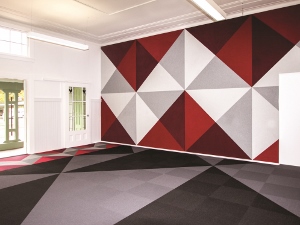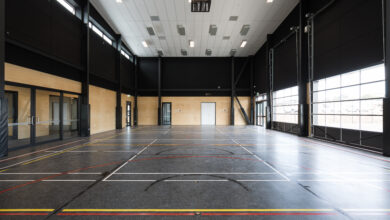Good acoustics create better learning environments

 Numerous local and worldwide studies suggest classrooms are greatly affected by acoustic quality. The design needs to take into consideration the effect acoustics can play on the learning environment, as competing background noise can cause students to misinterpret key words, phrases and concepts.
Numerous local and worldwide studies suggest classrooms are greatly affected by acoustic quality. The design needs to take into consideration the effect acoustics can play on the learning environment, as competing background noise can cause students to misinterpret key words, phrases and concepts.
A study conducted in United States classrooms reported that the speech intelligibility rating is 75 per cent. This means, on average, every fourth word in the classroom in misheard (Seep, Glosemeyer, Hulce, Linn, Aytar, 2000). Background noise – in particular irrelevant speech – interferes with children’s ability to hear their teachers or one another, therefore affecting their ability to learn.
Many teaching spaces in older schools were not designed for the current teaching methods and often have poor acoustic qualities. The traditional approach was for a teacher to stand at the front of the class, whereas today, teachers prefer to move around. This involves working with groups or individuals and requires their voices to be heard from all parts of the room.
Evaluating the acoustic suitability of your classrooms is the first important step to ensure that unsatisfactory acoustics do not adversely affect learning in your school. The Ministry of Education strongly recommends that you:
• Make an assessment or, if in doubt, have one carried out by an acoustics specialist
• Remedy any shortcomings highlighted by the assessment.
The signal-to-noise ratio is the ratio of the teacher’s voice to the ambient noise. The recommended minimum necessary for students to hear efficiently in a classroom is +12 to +15 dB (+20 dB is preferred when there are students with hearing impairments). This means that if the background noise level is, say, 55 dB, the teacher would need to speak at 70 dB, which is almost shouting. The louder the background noise, the louder the teacher must speak so the students can hear clearly.
Absorbing unwanted noise
All materials have some sound-absorbing qualities; the sound that is not absorbed is reflected. In buildings, the sound-absorbing characteristic of a material is rated as the Noise Reduction Coefficient (NRC) and is measured at voice frequency. If the reverberation time of a room is too long, it can be reduced by adding other materials.
The Ministry of Education and The Acoustical Society of America suggest achieving the best acoustics for learning is by installing inlay acoustic ceiling tiles and a suitable acoustic wall covering.
Interior acoustic companies understand that all classrooms and educational areas are different and require unique solutions to provide the optimum level of noise reduction.
Because teachers’ voices travel best in spaces that are acoustically well designed, it is recommended that schools follow the appropriate stages set out in the Ministry’s Property Management Handbook. They should also ensure their architect or property manager consults with an acoustic consultant or an account manager at a company specialising in acoustic products.
Following these guidelines will develop classrooms that meet the needs of students and provide a comfortable environment for teachers to work in.
Autex Industries have over 40 years’ experience in the education sector and point out they have continuously improved the performance of their 100 per cent polyester, environmentally friendly products over that time.
The company’s interior acoustic solutions are described as a non-toxic alternative to mineral and fibreglass products, and durable, safe, clean, eco-friendly and well suited for use in the education industry.
Reference:
Seep, Benjamin., Glosemeyer, Robin., Hulce, Emily., Linn, Matt. Aytar, Pamela. Classroom Acoustics – A Resource for Creating Learning Environments with Desirable Learning Conditions, August 2000.
Ministry of Education & BRANZ. Designing Quality Learning Spaces: Acoustics, (2007).









